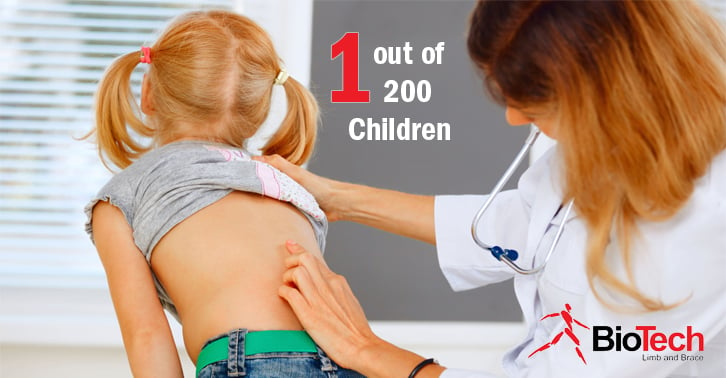Scoliosis is a medical condition in which there is an abnormal curve of the spine. This condition is either congenital, meaning it exists at or before birth, or idiopathic, meaning the cause is unknown. In the United States, this condition impacts one out of every 200 children, with girls being up to six times more likely than boys to develop idiopathic scoliosis.
Most of the time, this condition is diagnosed when the child is between the ages of 10 and 14; this condition is called adolescent idiopathic scoliosis. It can also be diagnosed between the ages of four and 10; this is called juvenile idiopathic scoliosis. When it is diagnosed as an infant, the condition is called infantile idiopathic scoliosis.
Most forms of scoliosis do not result in severe complications. Still, it is recommended to seek treatment for the condition as soon as it is diagnosed, so the child may live a full and normal life.
One of the main forms of treatment we have for idiopathic scoliosis is through the use of scoliosis back braces.
When Is Bracing Appropriate?
A doctor may not choose to brace a child if the deviation (curve) of the spine is below 25 degrees, unless there are extenuating circumstances. If there is less than 25 degrees curvature, but the deviation is progressing, then the doctor may recommend bracing. Otherwise, bracing is generally recommended for children who have deviations of 25 degrees and up.
In these cases, bracing can be an effective way to limit ongoing curvature, especially if the condition is detected early and the child gets treatment at a young age.
Getting the Best Results
A child receives the best benefit from bracing when:
- The condition is diagnosed at an early age;
- Bracing is begun when the child has a lot of future growth potential
- Curvature is moderate instead of severe
- The child wears the brace for the prescribed period of time per day
- The brace is well-designed and well-fitted
A well-designed process ensures the best results with bracing. It begins with measurement. The doctor will X-ray the child to help determine what is known as the Risser sign. The Risser sign is on a scale from one to five and helps determine how mature a child’s bones are. This will ultimately determine how much growth we can expect for the child. The lower the Risser sign, the better the results will be, since bracing typically ends at Risser sign 4 for girls, and at Risser sign 5 for boys.
Children who wear properly-designed scoliosis back braces can expect to lead active lives with few restrictions. For example, they can participate in most gym activities at school, and can remove the brace if needed for sports or physical activity. Make sure you have a doctor’s approval before allowing a child to do this.
Types of Bracing Treatment Options
There are several types of braces and bracing options available for children.
One main type is the underarm or low profile brace. This is also known as an underarm thoracolumbosacral orthosis (TLSO). A TLSO is custom-fitted and molded based on measurements of the child in an effort to restrict curvature progression. Most TLSOs are designed to be worn under clothing and are worn for 20-23 hours per day.
Another treatment option is the Providence Nocturnal Scoliosis System, which is designed to be worn at night. It is a hyper-corrective orthosis that has a proven track record of treating scoliosis while being easier to use for adolescent children.
Contact BioTech Limb and Brace in Birmingham, Alabama today to learn more about bracing treatment for scoliosis.
